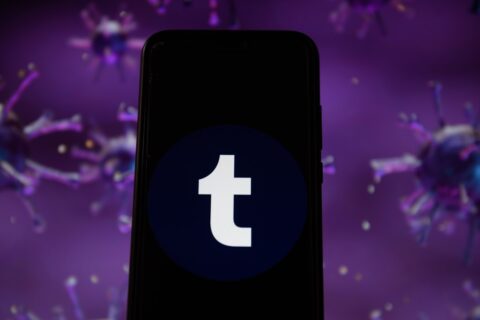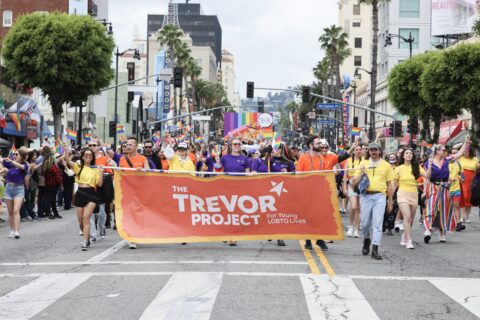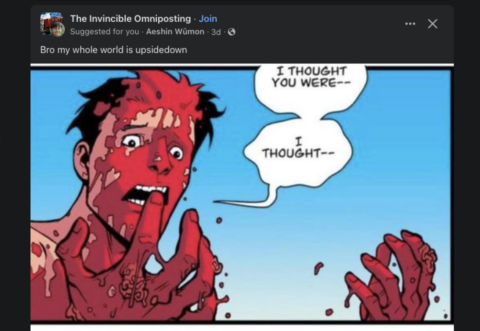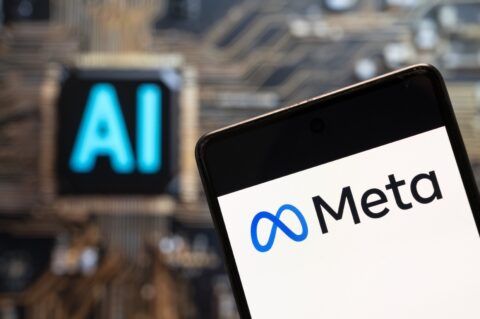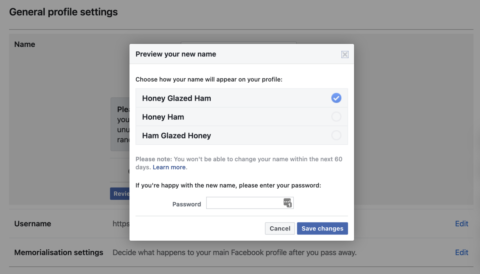Meta and Snap are the latest tech firms to get formal requests for information (RFI) from the European Commission about the steps they’re taking to safeguard minors on […]
Navigating startups through smart investments, outsourcing and cash preservation
Amnon Mishor Contributor Amnon Mishor is the CTO of Gynger, a fintech startup that provides flexible financing for software and infrastructure. More posts by this contributor Stop creating […]
BMW to launch near-autonomous driving next spring
BMW has announced it will launch Level 3 automated driving in some models next spring.
Tumblr to run on skeleton crew as parent company Automattic absorbs staff
According to a leaked memo, Tumblr’s longterm financial woes have reached a breaking point. Aside from a skeleton crew of essential workers in departments like trust and safety, […]
The Trevor Project leaves X as anti-LGBTQ hate escalates
On the one year mark before the next presidential election, LGBTQ organization the Trevor Project announces its leaving X/ Twitter amid escalating hate and online vitriol.

With the 2024 presidential election is just a year away, advocates are doing everything they can do bring attention to the country’s most pressing social justice issues. Today, national LGBTQ youth organization the Trevor Project announced it is leaving X (formerly Twitter) amid growing anti-LGBTQ sentiment, both online and off.
“LGBTQ young people — and in particular, trans and nonbinary young people — have been unfairly targeted in recent years, and that can negatively impact their mental health. In 2023, hundreds of anti-LGBTQ bills have been introduced in states across the country, which can send the message that LGBTQ people are not deserving of love or respect. We have seen this rhetoric transcend politics and appear on social media platforms,” the Trevor Project said in a statement.
Mark Zuckerberg vetoed attempts to address teen mental health on Meta platforms, new lawsuit alleges
On Nov. 9, the organization posted the following message on its page:
The Trevor Project has made the decision to close its account on X given the increasing hate & vitriol on the platform targeting the LGBTQ community — the group we exist to serve. LGBTQ young people are regularly victimized at the expense of their mental health, and X’s removal of certain moderation functions makes it more difficult for us to create a welcoming space for them on this platform. This decision was made with input from dozens of internal and external perspectives; in particular, we questioned whether leaving the platform would allow harmful narratives and rhetoric to prevail with one less voice to challenge them. Upon deep analysis, we’ve concluded that suspending our account is the right thing to do.
A 2023 survey of LGBTQ teens conducted by the Trevor Project found that discrimination and online hate contributes to higher rates of suicide risk reported by LGBTQ young people.
In June, GLAAD marked X as the least safe social media platform for LGBTQ users in its annual analysis of online safety, known as the Social Media Safety index. The report cites continued regressive policies, including the removal of protections for transgender users, and remarks by X CEO Elon Musk as factors in creating a “dangerous environment” for LGBTQ Americans.
In April, a coalition of LGBTQ resource centers nationwide formally left the platform in response to the removal of hateful conduct protections for both LGBTQ and BIPOC users, saying in a joint statement: “2023 is on pace to be a record-setting year for state legislation targeting LGBTQ adults and youth. Now is a time to lift up the voices of those who are most vulnerable and most marginalized, and to take a stand against those whose actions are quite the opposite.”
Protections for the LGBTQ community and reproductive health access are expected to be a flashpoint in the upcoming election cycle, especially amid Republican candidates. At the same time, social media platforms and the online spaces they create, are facing a growing call to address the rise of hate-filled content and misinformation — now exacerbated by astonishing rise of generative AI tools — that disproportionately affect marginalized communities.
The Trevor Project directs any LGBTQ young people looking for a safe space online to its social networking site TrevorSpace.org or its Instagram, TikTok, LinkedIn, and Facebook accounts: “No online space is perfect, but having access to sufficient moderation capabilities is essential to maintaining a safer space for our community.”
Daters want to leave body count stigma in 2023, eharmony says
Dating app eharmony launched its latest Dating Diaries report with interesting trends for 2024.

2024 isn’t here quite yet, but daters are already working on their “sexolutions,” according to eharmony. The longtime dating app released its latest Dating Diaries, a report on how 1,600 adults 21 and over surveyed in late September and early October this year feel about sex and love. All participants are either dating, in a relationship, cohabitating, or married, and results were weighed to be nationally representative by age, gender, and region.
Among participants’ sexy new year’s resolutions were eliminating “body count” stigma. Most, 67 percent, of singles don’t plan on asking their next partner how many people they slept with, and only 24 percent think the number actually matters.
In the new year, 19 percent of singles overall (and 26 percent of Gen Z singles) want to experiment with more sex positions. They’ll need to be able to open up to do so, but that’s a challenge for Gen Z, who were least likely of the generations to communicate sexual wants verbally after sex with a partner (40 percent). Thirty-six percent of Gen Z, however, are prioritizing sexual communication going into the new year. (If you want to prioritize this, too, head to Mashable’s guide on setting sexual boundaries.)
“The strength of our connection with partners isn’t dependent on how much experience we bring to the table, or even the frequency of sex. When it comes to building intimacy, it’s the quality of our communication that has the greatest impact on whether or not we will leave an interaction feeling fulfilled,” said eharmony relationship and sex expert Casey Tanner in the press release.
“Because many of us have learned that it’s not okay to speak openly about sex, we may find ourselves on a steep learning curve when it comes to discussing our sexual desires — and that’s okay,” Tanner continued. Instead of shaming yourself (even further), Tanner advises to commit to trying something new and staying curious about how it feels.
Want more sex and dating stories in your inbox? Sign up for Mashable’s new weekly After Dark newsletter.
“Try discussing your feelings about sex while taking a walk, rather than right after sex or while sitting face to face,” Tanner suggested. “Create a sexual bucket list and move through one idea at a time. Stay away from performance-oriented goals, and find pleasure in the process of getting to know yourself in this new light.”
Meanwhile, there’s still very much an orgasm gap: 32 percent of participants in relationships always orgasm with a partner, but 61 percent say an orgasm is very important. A quarter (25 percent) have even ended a relationship if they weren’t able to orgasm with a partner; millennials were most likely to do so (31 percent). Millennials also slept with more people than any other generation in 2023, according to eharmony, and 38 percent want more sex in 2024.
eharmony also identified several dating trends — like how almost half (48 percent) of Gen Z singles have dating regrets this year, and their top regret is wishing they prioritized themselves over dating (37 percent). Their top dating goal for 2024 is to find a long term relationship (49 percent), followed by dating intentionally (47 percent).
“To get out of a dating regret rut, daters are intentionally setting up 2024 differently,” said eharmony relationship expert Laurel House. “In order to reset and restart in a healthy way, daters should take a broader look at all of their dating encounters, and realize that in order to change your love life, your associations, actions, and attitudes must align with your renewed mindset.”
Millennials are prioritizing strong relationships; nearly half, 49 percent, want a healthier relationship in 2024. Twenty-seven percent of millennial singles wish they had been more proactive with a crush in 2023.
Thirty percent of all couples want to explore their sexuality more, while 20 percent overall (and 28 percent of Gen Z couples specifically) want to engaged or married.
Finally, eharmony identified the 2024 “dating leagues” — aka the top qualities singles are looking for in their partners. Gen Z singles, of which 30 percent prefer to date people “out of their league” (whatever that means), three traits they’re most looking for in a partner is emotional intelligence (28 percent), humor (23), and intelligence (16).
Millennials are a little different; 73 percent of millennial singles have dated someone “out of their league” at some point. Now, the top three traits they’re looking for in a partner in 2024 is also emotional intelligence (26 percent), followed by intelligence (19) and physical attractiveness (15).
“Gen Z and Millennials are becoming culture shifters in regard to mental health, quality of life, and healing,” said eharmony relationship expert Minaa B. in the press release. “It makes sense that their interests in a partner are rooted in qualities such as emotional intelligence, humor, and intellect.”
I tried out Facebook’s ad-free tier. Here’s what it’s like.
Facebook now offers a €9.99 subscription in Europe that gets rid of ads. Here’s what it’s like.

It’s finally real.
After years of fake news and memes about Facebook starting to charge for Facebook, it actually happened, albeit only in Europe.
Here’s why: Pressed with new regulations in the European Union, Meta recently started offering an ad-free experience for Facebook and Instagram at €9.99 per month. It is entirely optional; you don’t have to pay for Facebook, and you can just keep going on as before. But now, you have the option to pay to stop seeing ads, if you so desire.
The weird thing about this is that Facebook very vehemently did not want this to happen. From the company’s announcement: “We believe in an ad-supported internet, which gives people access to personalised products and services regardless of their economic status (…) But we respect the spirit and purpose of these evolving European regulations, and are committed to complying with them.”
Yes, even though my Facebook feed is full of people complaining about the new pricing being sheer robbery, let me repeat this once again: You don’t have to pay, and Facebook doesn’t want you to.
This piqued my interest. I like to have options, and if a paid, ad-free tier is something that Facebook made available reluctantly, perhaps it’s worth trying out? As soon as I got the option, I purchased the subscription, and have now been using Facebook and Instagram for roughly a day sans ads. Here’s what the experience is like.
Why does Facebook hate this so much?
Before we go on, it’s worth touching on why, exactly, is Facebook against an ad-free subscription tier. It may seem more lucrative for the company to just take your money to keep using the service at all. But Facebook makes more money if it can serve ads from third-party companies to its users very precisely, and it can only do that if most of its users actually do see ads.

Credit: S3studio / Getty Images
With its monstrously huge user base of more than 3 billion people who share their life’s moments on Facebook, and a system that tracks these people even when they’re away from the platform, the company can give advertisers very precise data on who its users are and what type of ads they’re likely to react to. It’s gotten so good that many people suspect that the app listens to you talk and then serves you ads based on what you say. The company says it doesn’t do that, but it’s worth quoting its official note on the subject: “We understand that sometimes ads can be so specific, it seems like we must be listening to your conversations through your microphone, but we’re not.”
That’s Facebook’s product, and that’s what it’s selling to advertisers: it can serve ads so precise that it almost seems like it can read your mind. If people instead choose to do away with ads and go with a subscription instead, that product will no longer be as good.
Why does the EU want this so much?
It boils down to the use of your personal data. The EU holds the position that “the protection of natural persons in relation to the processing of personal data is a fundamental right.” Furthermore, if a company wants to process a EU citizen’s personal data in order to better serve them ads, it’s required to ask for their consent. But the question of what constitutes consent isn’t trivial; merely saying “you don’t have to use it if you don’t like it” to users is often not enough, especially if the company saying that holds a dominant position on the social network market.
One way for Facebook to give users a real choice with regards to their personal data being processed for the purpose of advertising is simply to not do it — if the customer pays a subscription fee. So that’s what Meta, and its subsidiaries Facebook and Instagram, chose to do.
How much is it, again, and where can you get it?
You can only purchase the ad-free Facebook subscription in the EU; it is not available in the U.S. yet. You might not care about being able to pay for something that you already have for free, but remember: this is about choice, and choice is always a good thing. Being a resident of the European Union (more precisely, Croatia), I was able to purchase the subscription.

Credit: Stan Schroeder/Mashable
As for the price, it’s €9.99 ($10.70) per month if you purchase it through Facebook’s web version, and €12.99 ($13.91) per month on iOS and Android. There’s no benefit in purchasing the subscription on your phone, so just don’t do it.
It does get a little weird here, though. Facebook (its parent Meta, actually) only charged me $8.99 (yes, American dollars), which came out to €8.43. It’s unclear why the price was lower than advertised.
Furthermore, Facebook said that this initial subscription fee will cover all linked accounts in your Account Center. But starting March 1, 2024, an additional fee of €6/month on the web and €8/month on iOS and Android will apply for each additional account listed in your Account Center.
No ads, but lots of suggestions
After I purchased the subscription, Facebook warned me that it may take up to 24 hours for ads to stop showing. It happened a lot earlier than that, and the difference was noticeable, especially on Instagram, which is typically infested with a ton of ads. The change may not be apparent right away; after all, Facebook and Instagram’s ads aren’t as intrusive as YouTube ads, and it’s easy to scroll past them. But over time, I felt that I saw less irrelevant content, and more of the stuff that I actually wanted to see.
It also felt good to actually be in control for once. After being a user of both Facebook and Instagram for well over a decade, and never having much of a say over the ads I see on there, it was oddly liberating to be scrolling through my feed knowing that I wouldn’t see a single ad.
However, and it pains me to say this, the experience wasn’t drastically different than before. The main reason is that both Facebook and Instagram kept showing the “Suggested for you” posts, and while Meta may not classify them as “ads,” (Facebook specifically says they’re “not paid for,”) they still feel like ads, and they’re often completely irrelevant to my interests.
For example, as I fired up Instagram this morning, this is what I saw: one post from someone I follow. Then a horizontal, expandable strip of “Suggested for you” pages. Then another post from someone I follow. Then a “Suggested for you” post, with a meme that I did not particularly relate to. Then another post from someone I follow. Then another “Suggested for you” post. Then a bunch of “Suggested” reels. You get the idea.

Credit: Facebook
Facebook was a little better, but it, too, served a bunch of suggested posts, sometimes relevant, sometimes not. And while you can shoo these away individually, there’s no way to get rid of them completely.
What are we paying for here?
This brings me to another important point: Besides the removal of ads, I saw zero additional benefits from my subscription. As a paying customer, I can’t get rid of suggested posts, nor do I get more control over them than before. I also don’t get to set my Facebook News Feed to chronologically display content posted by my friends (both subscribers and non-subscribers can do that by going to Menu – Feeds, but they can’t set it as the default view in the app).
Every step of the way, it’s glaringly obvious that the €9.99 monthly subscription is not something Meta actually wants people to buy. The company complied with the EU’s regulation and removed the ads (if you don’t count suggested posts as ads), but it added no additional features or benefits for subscribers.
This is in contrast to what Elon Musk’s X/Twitter has done with its subscription tier, where the company keeps piling on new features for subscribers and removing them for those who don’t pay. A middle of the road approach would probably be best for users, but neither company seems to care very much about giving its users exactly what they want.
Should you buy Facebook’s ad-free subscription?
I suspect that the number of users opting for the ad-free tier will be fairly small. Facebook didn’t do much to make the experience a lot better than the free tier, and people who don’t like Meta messing with their personal data will likely opt out of using its apps completely (or have already done so).
If you’re someone that uses Facebook and Instagram daily, but you’re concerned about Meta constantly monitoring what you do (both on and off its sites) for the purpose of advertising, you should still consider paying the monthly fee. If nothing else, it gives you some peace of mind. But know that it’s not exactly a great deal.
I will keep my Facebook and Instagram ad-free for now. I like the fact that I have more control over how my personal data is used. Every user should decide for themselves whether this is worth paying for. But the fact that I can’t get rid of suggested posts is worrisome, and it certainly would be nice if Facebook sweetened the deal by adding some additional benefits down the road.
UK’s online safety regulator puts out draft guidance on illegal content, saying child safety is priority
The UK’s newly empowered Internet content regulator has published the first set of draft Codes of Practice under the Online Safety Act (OSA) which became law late last month. […]
Political ads on Facebook, Instagram required to disclose use of AI
Meta has introduced a set of AI rules for political advertisers on Facebook and Instagram.

OpenAI just announced its latest large language model (LLM), GPT-4 Turbo. Elon Musk’s xAI recently unveiled its own AI chatbot, Grok. And Samsung is jumping on the bandwagon, too, with its LLM, Gauss. On top of all this, AI-powered video and image generators are continuing to evolve. With artificial intelligence creating more and more content on the web, some social media platforms want users to know when media is created or altered by AI.
The latest company to step in with a set of policies around AI-created content is Meta, the parent company of Facebook and Instagram. And its new set of rules sets a standard on its platforms, specifically for political advertisers.
In a blog post on Wednesday, Meta stated it has a new policy that will force political advertisers to disclose when a Facebook or Instagram ad has been “digitally created or altered, including through the use of AI.” This includes “any photorealistic image or video, or realistic sounding audio, that was digitally created or altered.” The policy will pertain to all social issues, electoral, or political advertisements.
According to Meta’s new policy, a disclosure on an ad will be required when the advert depicts a real, existing person “saying or doing something they did not say or do.” Furthermore, if an ad contains a fictional yet realistic-looking person, it too must include a disclosure. The same goes for any political ad that uses manufactured footage of a realistic event or manipulates footage of a real event that happened.
There are some uses of AI or digital manipulation that will not require disclosures, Meta says. But these are only for uses that are “inconsequential or immaterial to the claim, assertion, or issue raised in the ad.” Meta provides examples of these exceptions, such as image size adjusting, cropping an image, color correction, and image sharpening. The company also reiterates that any digital manipulation utilizing any of those examples that does change the claims or issues in the ad would need to be disclosed.
And, of course, these AI-created or altered ads are all still subject to Facebook and Instagram’s rules around deceptive or dangerous content. The company’s fact-checking partners can still rate these ads for misinformation or deceptive content.
AI will be a more prominent factor in next year’s coming elections, such as the 2024 U.S. Presidential election, than it ever has been before. Even Meta now has its own large language model as well as an AI chatbot product. As these technologies continue to evolve, readers can be sure more online companies are going to produce a set of corporate or platform standards. With those elections on the horizon, Meta seems to be setting the ground rules for political ads now.
Meta’s new AI policy will roll out officially in 2024 and will pertain to advertisers around the globe.
How to change your name on Facebook
Here’s how to change your name on your Facebook account via your desktop or mobile, as well as rules on what you can change it to.

Humans are not static creatures. Living is a process of discovery — of the world, of each other, and of yourself. As such, the name a person is given at birth isn’t always the name they wish to carry to death. There are countless reasons why someone may choose to change their name, including marriage, affirmation of their gender identity, or simple dislike of the name they currently hold.
Fortunately, Facebook allows users to easily change their name on their profile, so you aren’t stuck forever with the one you entered when first creating your account. Facebook itself changed its company name to Meta, after all.
Here’s how to change your name on your Facebook account.
How to change your Facebook account name on desktop
- 2 min
- Desktop or laptop
Step 1:
Open Facebook.
Step 2:
Click on the down arrow icon in the top right corner of your screen to open a menu.
Step 3:
Click the “Settings & privacy” cog icon.
Step 4:
Click the “Settings” cog icon to go to “General profile settings.”
Step 5:
Next to “Name,” click “Edit.”
Step 6:
Enter your new name, then click “Review Change.”
Step 7:
Choose how you want your name to be displayed — either your full first, middle, then last name; just your first and last name; or your surname, middle, then first name. Then enter your Facebook password and click “Save changes.”
How to change your Facebook account name on mobile
- 2 min
- Smartphone
- Facebook app
Step 1:
Open the Facebook app.
Step 2:
Tap the “Menu” profile picture icon in the bottom right corner of your screen.
Step 3:
Tap the cog icon in the top right corner of your screen to open your settings.
Step 4:
Under “Account,” tap “Personal information.”
Step 5:
Under “General,” tap “Name.”
Step 6:
Enter your new name, then tap “Review Change.”
Step 7:
Choose how you want your name to be displayed — either your full first, middle, then last name; just your first and last name; or your surname, middle, then first name. Then enter your Facebook password and tap “Save changes.”
It’s a good idea to check for spelling mistakes before confirming the change, as well as make sure you’re happy to stick with your new name for a while. Facebook doesn’t let you change your name again within 60 days of altering it, so if you have second thoughts you’ll just have to live with it for at least two months.
There are some restrictions as to what Facebook considers a valid name. The social media platform refuses to accept titles such as Doctor or Queen, as well as offensive and suggestive words. It also won’t allow symbols, numbers, unusual capitalisation, or punctuation, though X Æ A-Xii Musk is still normal enough by Facebook’s standards.
Unfortunately, Facebook won’t accept characters from multiple languages either. Anyone with an English first name and Chinese middle name for example will therefore have to transliterate one or the other to make their whole name fit under Facebook’s rules.
However, Mashable was pleased to discover and is delighted to report that “Honey Glazed Ham” is considered a perfectly reasonable name.

Credit: Facebook



